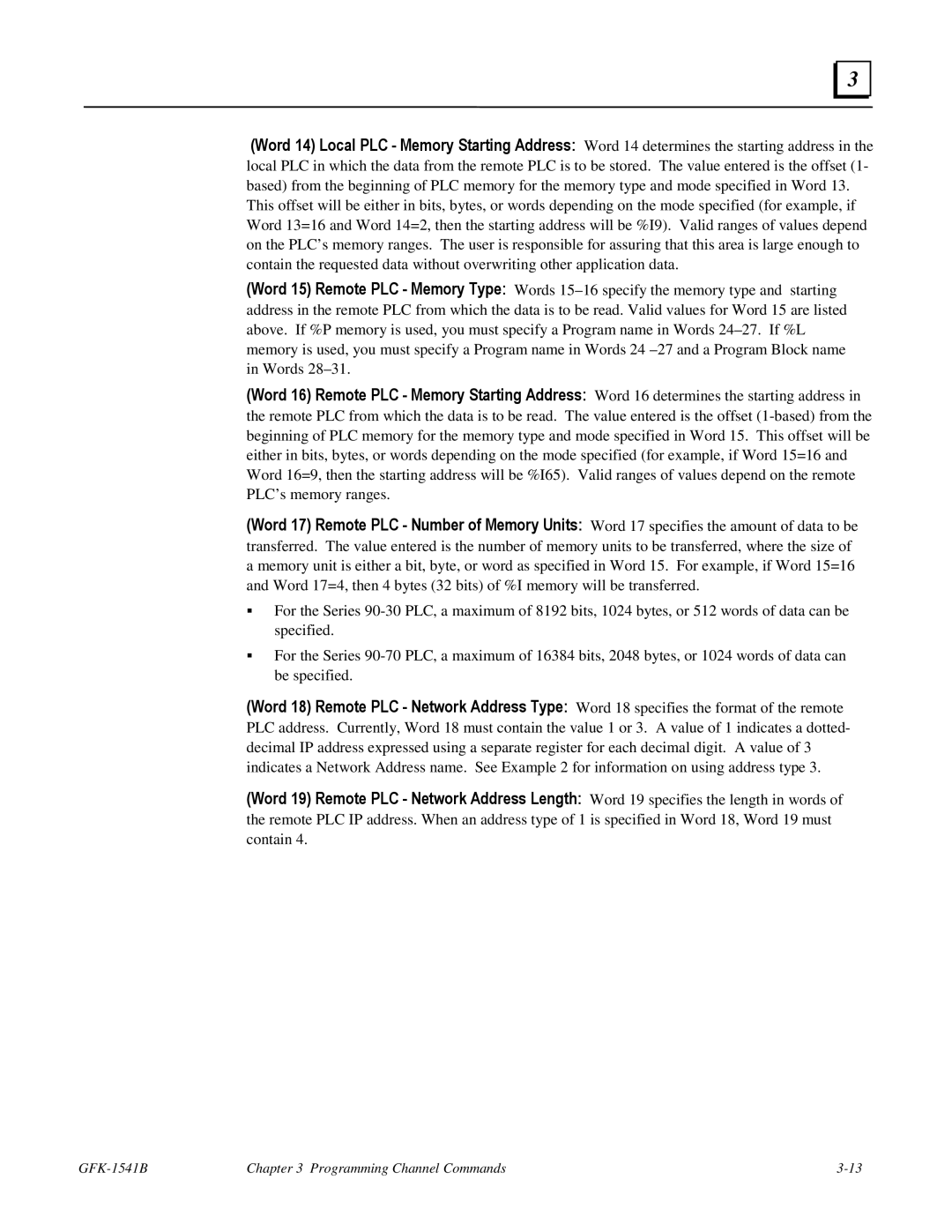3 |
(Word 14) Local PLC - Memory Starting Address: Word 14 determines the starting address in the local PLC in which the data from the remote PLC is to be stored. The value entered is the offset (1- based) from the beginning of PLC memory for the memory type and mode specified in Word 13.
This offset will be either in bits, bytes, or words depending on the mode specified (for example, if Word 13=16 and Word 14=2, then the starting address will be %I9). Valid ranges of values depend on the PLC’s memory ranges. The user is responsible for assuring that this area is large enough to contain the requested data without overwriting other application data.
(Word 15) Remote PLC - Memory Type: Words
(Word 16) Remote PLC - Memory Starting Address: Word 16 determines the starting address in the remote PLC from which the data is to be read. The value entered is the offset
(Word 17) Remote PLC - Number of Memory Units: Word 17 specifies the amount of data to be transferred. The value entered is the number of memory units to be transferred, where the size of a memory unit is either a bit, byte, or word as specified in Word 15. For example, if Word 15=16 and Word 17=4, then 4 bytes (32 bits) of %I memory will be transferred.
For the Series
For the Series
(Word 18) Remote PLC - Network Address Type: Word 18 specifies the format of the remote PLC address. Currently, Word 18 must contain the value 1 or 3. A value of 1 indicates a dotted- decimal IP address expressed using a separate register for each decimal digit. A value of 3 indicates a Network Address name. See Example 2 for information on using address type 3.
(Word 19) Remote PLC - Network Address Length: Word 19 specifies the length in words of the remote PLC IP address. When an address type of 1 is specified in Word 18, Word 19 must contain 4.
| Chapter 3 Programming Channel Commands |
